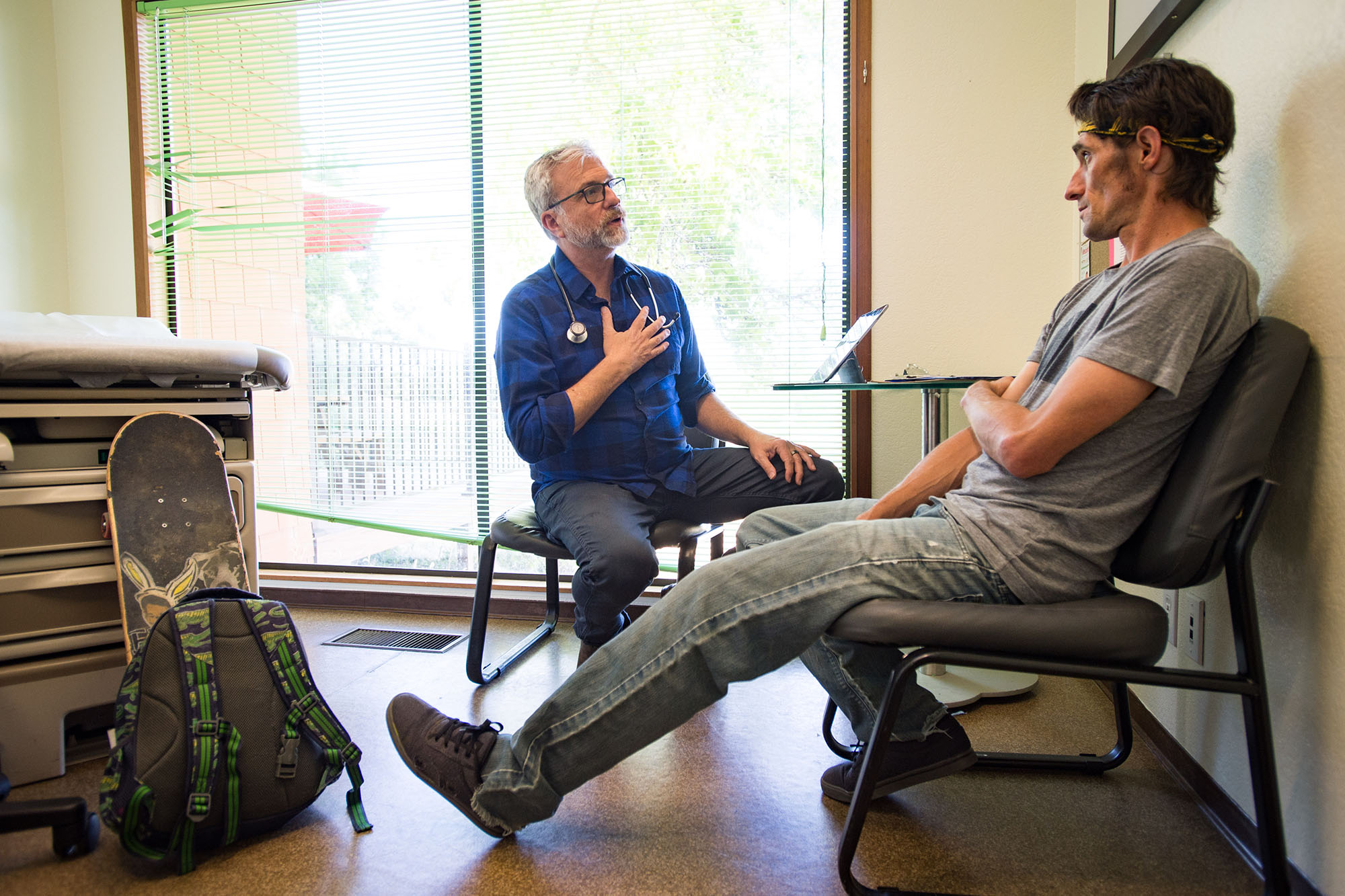Sharp drops in Latinx and Black students admitted to medical schools followed the state’s 1996 ban on considering race in admissions — an issue raised in this year’s Proposition 16 campaign
New UCSF study finds diversity has recovered over time to pre-Prop 209 levels, due to the success of University of California programs like PRIME and the new UC Riverside medical school
But the diversity of California medical schools has not kept pace with the state’s fast-changing demographics — with ongoing, potentially long-term effects on health equity
A study released today by researchers at the University of California, San Francisco, finds the racial and ethnic diversity of students enrolled at California medical schools has largely recovered after sharp drops in the numbers of Latinx and Black students immediately following the passage of Proposition 209 in 1996, but little further progress has been made. The report concludes that medical schools do not yet reflect the state’s fast-changing demographics — an issue with long-term ramifications for the health workforce and the state’s capacity to achieve greater health equity through ethnically and linguistically concordant care.
The report, authored by a team led by Janet Coffman, MPP, PhD, professor of health policy at the Healthforce Center at UCSF and Alicia Fernández, MD, professor of medicine and director of the UCSF Latinx Center of Excellence, credits a number of ongoing University of California initiatives, including the UC Programs in Medical Education (PRIME), with helping restore some diversity to California’s medical schools.
The report, which examines medical school enrollment data from 1990 to 2019, is the first longitudinal assessment of the diversity of California’s medical schools before and after the passage of Proposition 209, which banned consideration of race in admissions to the public higher education system. This issue reemerged again this year when voters rejected another state ballot measure, Proposition 16, that sought to end the ban.
In the new study, Recovery with Limited Progress: Impact of California Proposition 209 on Racial/Ethnic Diversity of California Medical School Matriculants, 1990 to 2019, researchers found that Latinx and Black students were significantly impacted by these changes in admissions policy.
The number of Latinx students in California medical schools decreased substantially after the passage of Proposition 209 — from 113 in 1990 to a low of 92 in 1997 — before climbing to 200 in 2019. Over that 30-year period, the proportion of Latinx matriculants increased slightly, from 11% (1990) to 14% (2019) — but in the meantime, the Latinx population of California has grown tremendously, from 26% of the population in 1990 to 39% in 2019.
Similar trends have impacted Black students, with numbers declining immediately following Proposition 209 — from 63 (1990) to 47 (1997) — and then rising again to 121 (2019). But during those 30 years, there has been only a small change in the overall proportion of Black medical school matriculants, which climbed from 6% (1990) to 8% (2019).
“These numbers provide both bad news and good news. The bad news is the diversity of our state’s health workforce is nowhere near where it needs to be, especially given the appreciation we’ve gained over the last 30 years of the importance of diversity — in training, teaching, and especially in clinical care, where speaking the language and understanding the culture of our patients is essential,” says coauthor Alicia Fernández, MD, director of the UCSF Latinx Center of Excellence. “The good news is that the lack of diversity in our state’s medical schools could have been much worse — and the strategies we’ve used to recover have the potential to make an even bigger difference going forward.”
The report highlights the potential, in particular, of public medical school programs like UC PRIME — an initiative focused on increasing the number of physicians working with underserved communities that has boosted the number of racially/ethnically diverse medical students enrolled in UC schools. The study finds a noticeable increase in the number of Latinx and Black students enrolling in medical schools in the years following the establishment of the first PRIME program in 2004 at UC Irvine, for example — numbers that have grown as programs were established on additional campuses.
The creation of a new UC Riverside medical school campus in 2013 also significantly impacted the number of Latinx and Black matriculants because it also prioritizes admitting students committed to caring for underserved Californians, especially in the Inland Empire.
The report notes flagging progress among private medical schools, where the proportion of Latinx and Black matriculants has not rebounded in the same way.
“This report offers recommendations for policymakers committed to increasing diversity in our medical school system,” says Janet Coffman, MPP, PhD, professor of health policy at the Healthforce Center at UCSF. “We should not think that without affirmative action, nothing can be done to allow our medical schools to look more like the rest of the state. There is plenty of evidence of what kinds of approaches work. And if we invest in proven strategies, we can achieve more.”
The study concludes with a detailed list of recommendations for achieving this goal, many of which were included in the 2019 report of the California Future Health Workforce Commission.
- The Commission concluded that a $93.5 million investment over 10 years to fully fund and expand PRIME across all UC campuses would stabilize funding for PRIME programs and create 10 additional first-year seats each year — or 100 first-year medical students over 10 years, many of whom would be from underrepresented groups.
- The Commission also recommended investing $150 million over the next decade to support advising and mentorship programs for college students from disadvantaged backgrounds — estimating this would produce 25,500 new health care workers (including physicians), most of whom would be from underrepresented groups.
- Finally, the Commission suggested that a $26 million investment over 10 years in postbaccalaureate training programs for people from disadvantaged backgrounds would yield 1,000 additional positions and provide scholarships that cover 100% of tuition.
“Regardless of the outcome of Proposition 16, it is well within our means to help our medical schools — and California’s health system as a whole — look a lot more like California,” says Sandra Hernández, MD, president and CEO of the California Health Care Foundation, which sponsored the Commission’s work and has also supported this UCSF study. “This report shows how much further we as a state have to go. But it also shows us what it will take to get there — and it’s a strong reminder that we can do it.”
Read the full report, Recovery with Limited Progress: Impact of California Proposition 209 on Racial/Ethnic Diversity of California Medical School Matriculants, 1990 to 2019.
Contact Information:
Eric Antebi
Chief Communications Officer
About the California Health Care Foundation
The California Health Care Foundation is dedicated to advancing meaningful, measurable improvements in the way the health care delivery system provides care to the people of California, particularly those with low incomes and those whose needs are not well served by the status quo. We work to ensure that people have access to the care they need, when they need it, at a price they can afford.





